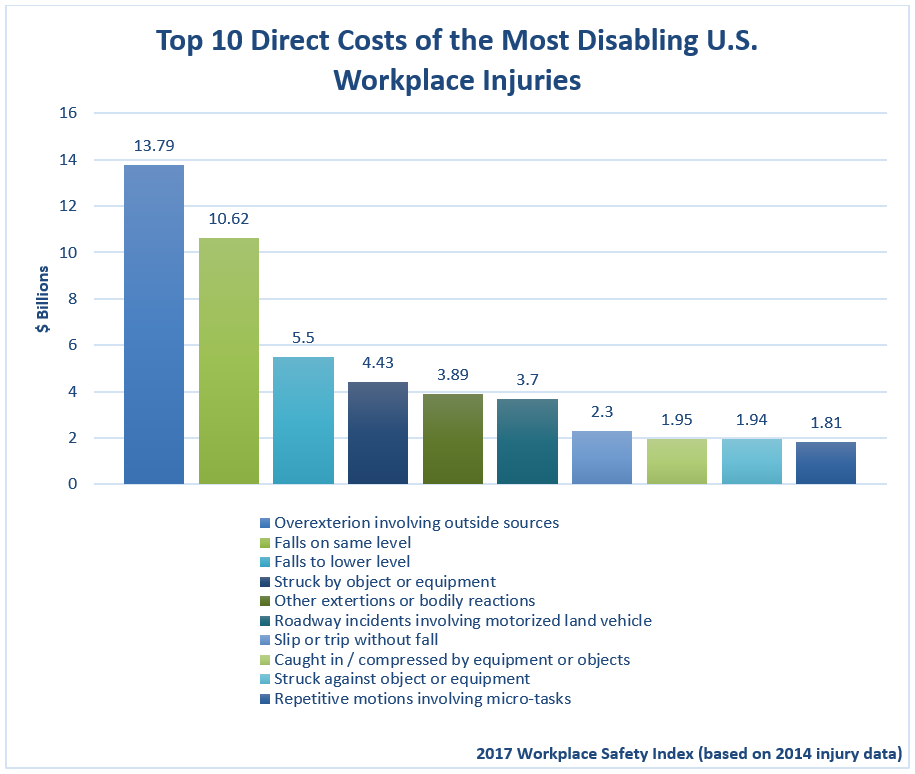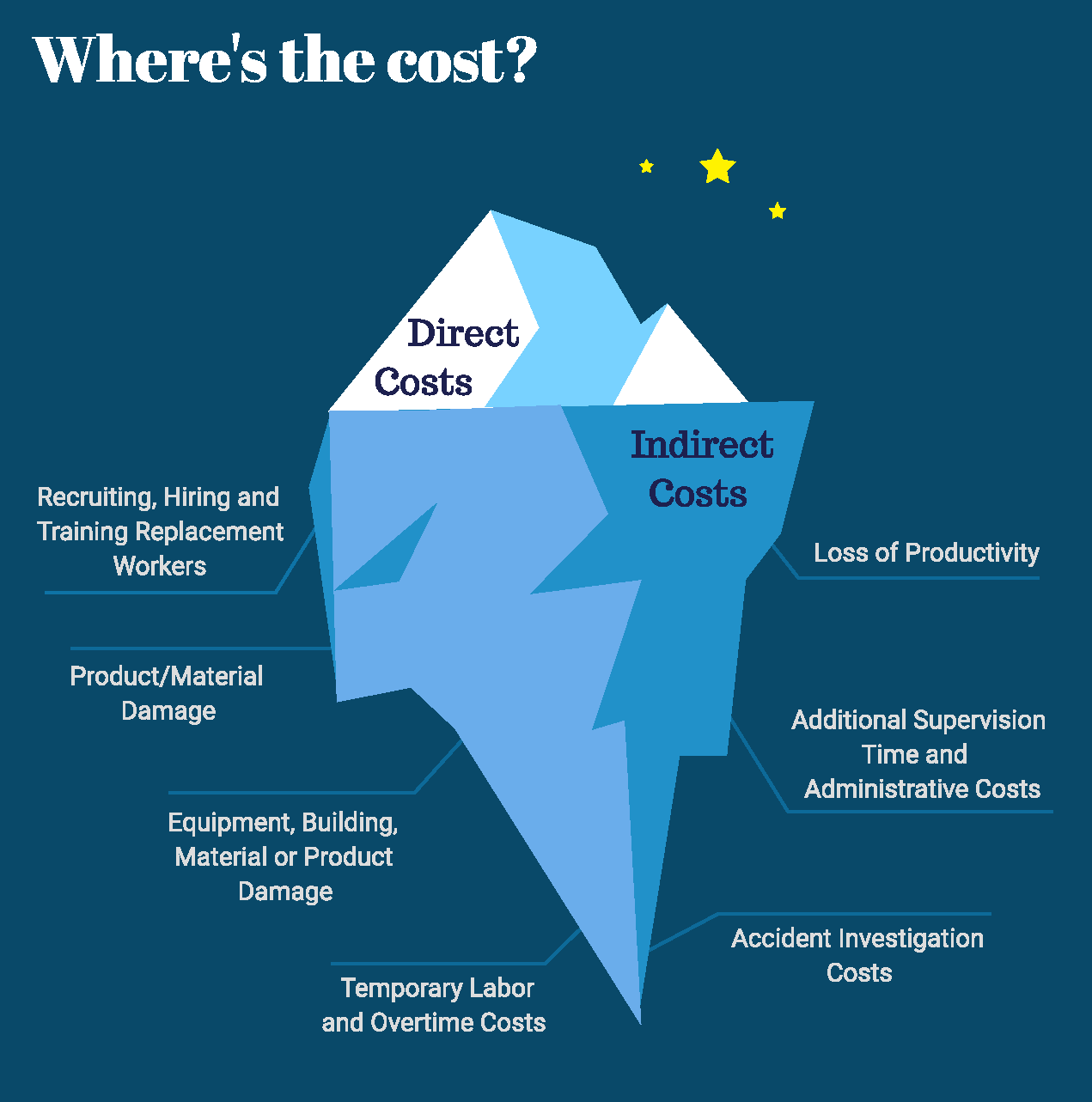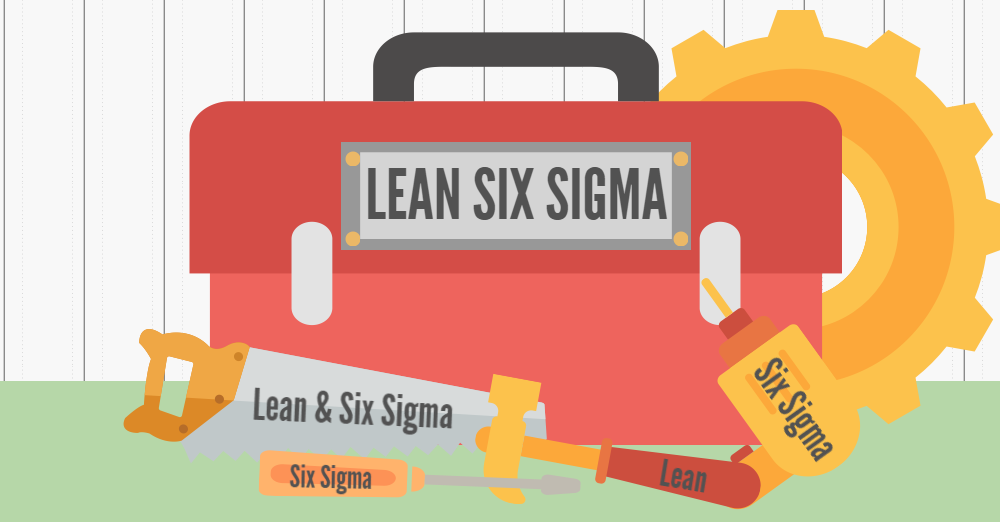THE NOVIQU BLOG
The True Cost of an Accident

By Austin Gardner
For every employer, accidents in the workplace are an area of concern. Not only do they compromise the health and safety of employees; they leave a huge dent in the company's pockets. In most cases, employers are unaware of just how much an accident will cost them due to so many indirect and hidden costs.
Let’s take a look at the true cost of accidents in the workplace, including direct and indirect costs to gain a better understanding of why it is so important to prevent not just the accident, but the repercussions as well.
Total costs of workplace accidents
Many employers only prepare for the direct costs of an accident which are usually covered by insurance; however, this only constitutes a very small portion of the entire cost of an accident. The truth is that the indirect costs of workplace accidents, which are often not covered by insurance, are much higher than the direct costs. According to the 2017 Liberty Mutual Workplace Safety Index, the total cost for the most disabling workplace injuries in 2014 was $49.9 billion. This equates to 83.4% of the total cost of all workplace injuries reported.

To have a better understanding of this, we’ll use the analogy of an iceberg. When you look at the iceberg, the visible part is what we see. This is only about 10% of the entire iceberg. The rest is under water, and out of our view. In the same way, direct costs of an accident are just the tip of the iceberg.
The two main types of costs are explained below along with common examples.
1. Direct Costs
The direct costs of workplace accidents are usually covered by insurance. They include the hospital bills of the affected employee, costs of prescription medicines and therapy, compensation payment made to the injured employee, etc. In other words, they are costs directly accumulated from the accident. They can be easily calculated.
2. Indirect Costs

On the other hand, indirect costs of workplace accidents are the costs which are not a direct result of the accident. Therefore, they are not usually insurable and all payments have to be made from the pocket of the employer, or from profit made through sale of the company’s products and services. These costs are usually much greater than direct costs, with some studies even claiming that there is $3 - $10 of indirect costs for every $1 of direct costs. As indirect costs tend to vary, they are more difficult to calculate than direct costs.
Some of the damages that indirect costs encompass include:
- Downtime of the injured employee or employees
- Cost of damage done to the machine, equipment or materials which were involved in the accident.
- Cost of overtime as a result of the accident like additional light and heat, additional supervision, lost production, late deliveries, etc.
- Cost of selecting, employing, training, educating new employees or reshuffling existing employees to minimize disruption of production as much as possible.
- Cost of those in managerial positions, as well as clerical positions, to investigate and process claim forms and other paperwork, interviews, telephone calls, etc.
- Costs associated with any fines that may be applied due to injury and breaking any safety guidelines.
- Costs brought about by loss in productivity of all other employees and managers as a result of disruption in production and delivery. In fact, loss in productivity cost companies $60 billion every year according to the Occupational Safety and Health Administration (OSHA).
- Costs brought about by decrease in productivity when the injured employee comes back to work. This could be a result of physical injuries which have not completely healed yet, or psychological trauma caused by the accident.
- Any medical bills which may not be covered by insurance which could include certain supplies and equipment, personnel for therapy, treatment facilities, etc.
Effects of workplace accidents
No matter how much employees try to prevent workplace accidents, unforeseen circumstances and errors can happen anytime. So, in a way, accidents in the workplace are a fact of life. While some of the effects of such accidents on the employer and the employees are evident, some are a little less obvious.
Let us address the different effects workplace accidents have both on the employer and the employees.
- Monetary costs
These are the direct and indirect costs that we have described in detail before. The most obvious and sometimes severe consequence of workplace accidents. - Physical injuries or damages on affected people
The employee(s) directly involved in the accident may suffer from serious physical injuries, either permanent or temporary. They could even be left unable to work again because of their injuries. Physical damages could include broken arms/legs, loss of motor abilities, persistent headaches and pains in other parts of the body, etc. - Psychological effects on involved employee(s)
Common psychological effects on people directly involved in the accident include depression, anxiety, post-traumatic stress disorder (PTSD), among many others. All of which could significantly reduce their productivity when they return to work. - Strain on employer-employee relationship
A common result of workplace accidents is that there tends to be a strain on the employer-employee relationship. Although they may not be on bad terms, their amount of interaction may reduce, the tone of their relationship may be less cordial, providing for more difficult interactions in the future.
When it comes to accidents in the workplace, it’s easy to reconcile the direct costs and move on. However, it’s important to keep in mind the indirect costs and effects that a workplace injury may produce. For more information on costs of workplace injuries, including tools to help you calculate what a specific accident might cost, check out OSHA’s Business Case for Safety and Health and check out our safety calculator incident calculator.
More

Posted on 03/03/2019 by Chad Haney
New Feature: Workflows are finally here!

Posted on 07/15/2021 by Amber Ramsey
Why Now Is a Good Time to Pursue a Degree to Help You Start Your Own Business

Posted on 12/05/2018 by Allison Opitz